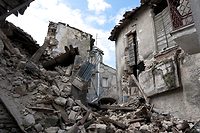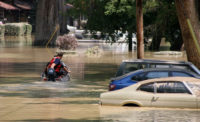With assistance from the Berkeley Seismological Laboratory, the San Francisco Bay Area Rapid Transit (BART) system can now automatically brake trains when earthquakes threaten the Bay Area, allowing from tens of seconds to up to a minute for trains to slow down before the ground starts to shake, according to an article from Homeland Security News Wire.
Instituted in August, the earthquake early warning system was created with the help of University of California, Berkeley, seismologists who hooked BART into data flowing from more than 200 stations throughout Northern California of the California Integrated Seismic Network, the article says.
A Berkeley release reports that electronic signals from seismic stations travel much faster than seismic waves. For quakes outside the Bay Area, the data gives BART’s central computers advance notice that the shaking is on its way, while providing much faster warning for quakes in the Bay Area itself. If messages from the seismic networks indicate ground motion above a certain threshold, the central computers supervising train performance institute what BART calls “service” braking – a normal slowdown to 26 miles per hour, the article reports.
The father away the quake is, the more time trains will have to slow down from speeds of up to 70 mph.
This system is aimed to prevent derailment and save passengers from potential injuries. According to BART Board president John McPartland, BART is the first transit agency in the U.S. to provide this form of early warning and intervention.
According to the article, discussions are also underway for a larger earthquake response system, similar to the one in Japan – which not only slows trains but alerts shoots and can even automatically shut industrial sites’ valves.
In this situation, the human element is removed from the equation, the article says. Previously, BART had accelerometers – devices which detect strong ground movement along the tracks, then ringing an alarm bell in the Central Control Facility. Supervisors then had to make the call of whether to radio train operators and tell them to initiate emergency braking.
The new system operates with automatic braking when a certain threshold is reached, the article says. After the service braking is triggered, supervisors in the control center assess whether trains need to come to a full stop or continue at slow speed, scanning for problems on the tracks.






